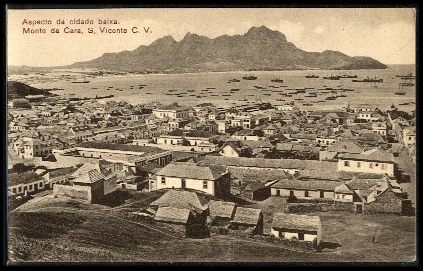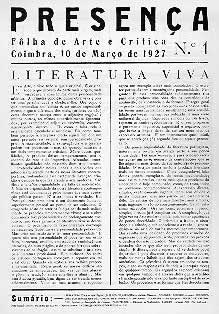|
Luís De Montalvor
Luís de Montalvor (January 31, 1891 – March 2, 1947) was a pseudonym of Portuguese poet and editor Luís Filipe de Saldanha da Gama da Silva Ramos. He founded the reviews ''Orpheu (review), Orpheu'' (modern Portuguese spelling: ''Orfeu'') [''Orpheus''] 1914 and ''Centauro (review), Centauro'' (''Centaur'') in 1916 and also worked in other reviews including ''Atlantida (review), Atlântida'' [''Atlantis''] (1915–20), ''Contemporânea'' (1915–26) [''Contemporary''], ''Presença'' and ''Sudoeste (review), Sudoeste'' in 1935. In 1933, he founded Editorial Ática, Lda. with its headquarters at a small ship at Rua das Chagas in Lisbon, in the early 1940s, he adopted the firm "Ática, S.A.R.L., Casa Editora" In 1942, he published for the publishing company ... [...More Info...] [...Related Items...] OR: [Wikipedia] [Google] [Baidu] |
São Vicente, Cape Verde
São Vicente (Portuguese for " Saint Vincent") is one of the Barlavento Islands, the northern group within the Cape Verde archipelago in the Atlantic Ocean, off the West African coast. It is located between the islands of Santo Antão and Santa Luzia, with the Canal de São Vicente separating it from Santo Antão. Geography The island is roughly rectangular in shape with an area of . From east to west it measures and from north to south .Cabo Verde, Statistical Yearbook 2015 Instituto Nacional de Estatística The island, of |
Centauro (review)
''Centauro'' (Portuguese for "centaur") was a Portuguese monthly literary review published in the capital Lisbon from October to December 1916. The review was headed by Luís de Montalvor who also published its first volume. The first volume was published in October 1916, the second in November and the last one in December. Decadentism In some form, the ''Centauro'' review was republished as part of the review ''Orpheu'' (''Orpheus''), whose titled as a trimonthly literary review which had the recovering a then current decadentist, that Luís de Montalvor who headed the first issue of the review, it was printed. But the then current literary was diverted to the futurism, intersectionism and sensationism of Fernando Pessoa and Mário de Sá-Carneiro, especially on the second issue, in which it substituted the founded to head the ''Orpheus'' review. For its first issue of the ''Orpheu'' (also as ''Orféu''), de Montalvor wrote an "introduction", finding to make an aesthetic ori ... [...More Info...] [...Related Items...] OR: [Wikipedia] [Google] [Baidu] |
Contemporânea
''Contemporânea'' (Portuguese for "Contemporary") was a Portuguese review magazine published in Lisbon from 1922 until 1926. It was headed by and had saved the graphic heading, it brought a literary direction secured for the main drafter Oliveira Mouta, which presented in 1915, attracted a number specimen, but only became viable in a part of May 1922 due to the support of the industrialist and collector Agostinho Fernandes (1886-1972), which later became the review's editor. The project had as the target of the titles ''In Contemporânea crystallized the modernism in the 1920s and you taste something mundane, its political tendency of the right''. Its publications totalled three numbers and the review turned it into a point of support by many "new" artists, which reprinted profusely. Its numerous contributors included Fernando Pessoa, Almada Negreiros, Mário de Sá Carneiro, Eduardo Viana, Diogo de Macedo, Mário Saa, Oliveira Mouta, António Ferro, Ernesto do Canto, An ... [...More Info...] [...Related Items...] OR: [Wikipedia] [Google] [Baidu] |
Presença
''Presença - Folha de Arte e Crítica'' (lit. "Presence: A Journal of Art and Critique") was a Portuguese magazine published in Coimbra from 10 March 1927 until 1940, producing a total of 54 issues during its existence. History ''Presença'' was an influential magazine. João Gaspar Somões and Branquinho da Fonseca founded the magazine in 1927 and were its primary directors alongside José Régio. Branquinho da Fonseca left the magazine after the 27th issue in 1930 due to concerns about creative freedom, which was seen as a reaction to Régio's increasing involvement with the publication. Starting with the 27th edition, which was published in 1930, the magazine's leadership was split three ways with the addition of Adolfo Casais Monteiro in 1938. The following year, the magazine's format was revised and expanded to contain more pages. The magazine briefly had an additional editor, secretary Alberto de Serpa and published two more volumes, November 1939 and February 1940. ''Pre ... [...More Info...] [...Related Items...] OR: [Wikipedia] [Google] [Baidu] |
Sudoeste (review)
''Sudoeste: cadernos de Almada Negreiros'' (Portuguese for "Southwest") was a Portuguese review published in Lisbon in 1935. The magazine was an attempt to continue the Orpheu movement. It was headed by Almada Negreiros (as suggested in the magazine's title), in collaboration with Dário Martins, which put their knowledge in different forms of direct interventionism, contacts and its influences to the publication of the periodical. Three issues were published between June and November 1935. The first issue reflected through its essays and text that forms the same theoretical presupposition: Life understood with a constructive union between the whole individuals. It also exacerbates having a value in creativity with an indispensable likeliness in all of the areas including arts and politics, condemning in a less objective form, which had mixed up the elements which annulled the potentials. Its third issue was relatively the first that it adopted the contributors from the revie ... [...More Info...] [...Related Items...] OR: [Wikipedia] [Google] [Baidu] |
Fernando Pessoa
Fernando António Nogueira Pessoa (; 13 June 1888 – 30 November 1935) was a Portuguese poet, writer, literary critic, translator, publisher, and philosopher, described as one of the most significant literary figures of the 20th century and one of the greatest poets in the Portuguese language. He also wrote in and translated from English and French. Pessoa was a prolific writer, and not only under his own name, for he created approximately seventy-five others, of which three stand out, Alberto Caeiro, Álvaro de Campos, and Ricardo Reis. He did not call them ''pseudonyms'' because he felt that this did not capture their true independent intellectual life and instead called them ''heteronyms''. These imaginary figures sometimes held unpopular or extreme views. Early life Pessoa was born in Lisbon on 13 June 1888. When Pessoa was five, his father, Joaquim de Seabra Pessôa, died of tuberculosis and on 2 January of the following year, his younger brother Jorge, aged one ... [...More Info...] [...Related Items...] OR: [Wikipedia] [Google] [Baidu] |
Diogo De Macedo
Diogo de Macedo (Vila Nova de Gaia, Portugal, 22 November 1889 – Lisbon, Portugal, 19 February 1959) was a Portuguese painter, sculptor, and writer. Sculpture Sculpted, among others, the busts of: *Antero de Quental ( 1929 ) * Sara Afonso ( 1927 ) *António Botto ( 1928 ) *Mário Eloy Mário Eloy (15 March 1900 in Algés – 5 September 1951 in Lisbon) was a Portuguese expressionist painter. Eloy was born in Lisbon. His style shows the influence of painters like van Gogh, Picasso and, mostly, from the German expressionist ... ( 1932 ) *some of the statues to the monumental fountain of Alameda ( 1940–1942) 1889 births 1959 deaths Portuguese art critics Portuguese sculptors Male sculptors Portuguese male writers People from Vila Nova de Gaia 20th-century Portuguese painters 20th-century male artists 20th-century sculptors University of Porto alumni Portuguese male painters {{Portugal-sculptor-stub ... [...More Info...] [...Related Items...] OR: [Wikipedia] [Google] [Baidu] |
1891 Births
Events January–March * January 1 ** Paying of old age pensions begins in Germany. ** A strike of 500 Hungarian steel workers occurs; 3,000 men are out of work as a consequence. **Germany takes formal possession of its new African territories. * January 2 – A. L. Drummond of New York is appointed Chief of the Treasury Secret Service. * January 4 – The Earl of Zetland issues a declaration regarding the famine in the western counties of Ireland. * January 5 **The Australian shearers' strike, that leads indirectly to the foundation of the Australian Labor Party, begins. **A fight between the United States and Indians breaks out near Pine Ridge agency. ** Henry B. Brown, of Michigan, is sworn in as an Associate Justice of the Supreme Court. **A fight between railway strikers and police breaks out at Motherwell, Scotland. * January 6 – Encounters continue, between strikers and the authorities at Glasgow. * January 7 ** General Miles' force ... [...More Info...] [...Related Items...] OR: [Wikipedia] [Google] [Baidu] |
1947 Deaths
It was the first year of the Cold War, which would last until 1991, ending with the dissolution of the Soviet Union. Events January * January–February – Winter of 1946–47 in the United Kingdom: The worst snowfall in the country in the 20th century causes extensive disruption of travel. Given the low ratio of private vehicle ownership at the time, it is mainly remembered in terms of its effects on the railway network. * January 1 - The Canadian Citizenship Act comes into effect. * January 4 – First issue of weekly magazine ''Der Spiegel'' published in Hanover, Germany, edited by Rudolf Augstein. * January 10 – The United Nations adopts a resolution to take control of the free city of Trieste. * January 15 – Elizabeth Short, an aspiring actress nicknamed the "Black Dahlia", is found brutally murdered in a vacant lot in Los Angeles; the mysterious case is never solved. * January 16 – Vincent Auriol is inaugurated as president of France. * January 19 – Ferry ... [...More Info...] [...Related Items...] OR: [Wikipedia] [Google] [Baidu] |




